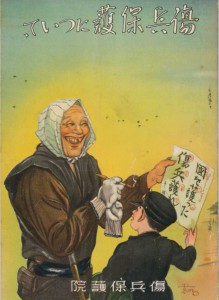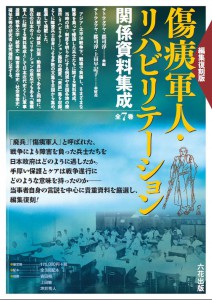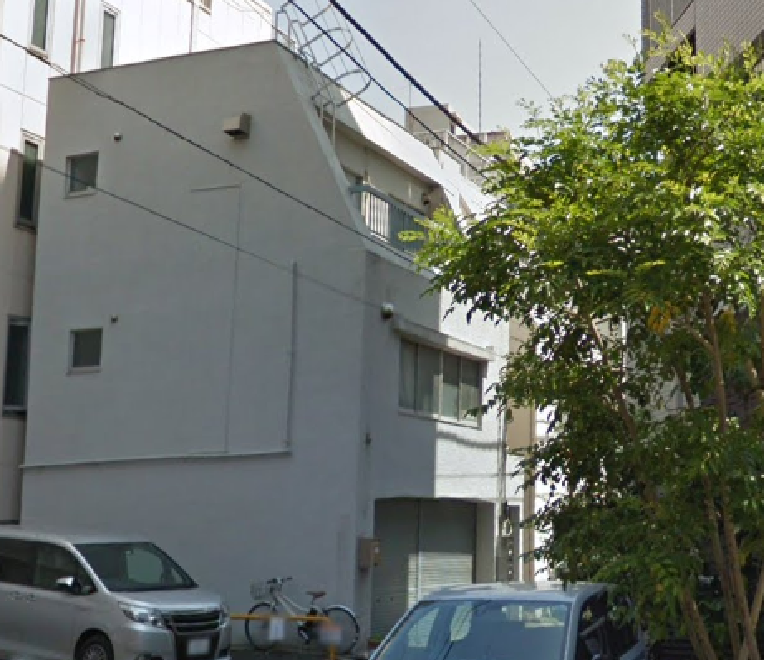『傷痍軍人/リハビリテーション関係資料集成』全7巻【電子書籍】
The Complete Collection of Reprinted Materials of Disabled Veterans and Rehabilitation
《編集復刻版》
印刷・製本された書籍(第1回配本)は品切れとなりました。増刷予定はございません。
電子書籍での購入は可能です。
↓
Maruzen eBook Library
KinoDen
EBSCO eBOOKS
サトウタツヤ・郡司淳――編
サトウタツヤ・郡司淳・上田早記子――解説
「廃兵」「傷痍軍人」と呼ばれた、
戦争により障害を負った兵士たちを
日本政府はどのように遇したか。
手厚い保護とケアは戦争遂行に
どのような意味を持ったのか──
当事者自身の言説を中心に貴重資料を厳選し、編集復刻!

アジア・太平洋戦争下、戦場で負傷し、さまざまな
障害を負って帰国した兵士たちに関する資料集成。
当時の法・制度を明らかにする例規や全国各地の療
養所・リハビリテーション施設の概要、「美談」集を収録。
とくに障害兵士自身による多数の文集を全国から集め、
厳選して掲載した。
総力戦下の「銃後」対策・動員政策であると同時に、
現在の日本のリハビリテーションの原点でもある「傷痍
軍人」に関する資料集成として日本近代史とくに軍事
援護・戦争文学・銃後史・障害者の歴史・社会事業史・
福祉史等の研究者・研究機関に呈する。
目次(PDF)
目次(Word)
◉体裁―― A4判/上製/総2、500ページ
◉揃定価──────175,000円+税
◉推薦───────吉田裕・上田敏・坪井秀人
◉電子書籍ISBN 978-4-86617-200-2
〈全7巻〉
第1巻●制度・施策/医療・教育編Ⅰ+解説
第2巻●制度・施策/医療・教育編Ⅱ
第3巻●手記・文芸作品集Ⅰ
第4巻●手記・文芸作品集Ⅱ
第5巻●手記・文芸作品集Ⅲ
第6巻●手記・文芸作品集Ⅳ
第7巻●手記・文芸作品集Ⅴ
The Complete Collection of Reprinted Materials of Disabled Veterans and Rehabilitation
Seven Volumes
Edited and reprinted in 2014-2015
¥175,000 (total cost for all volumes)
With commentary by Tatsuya Satou, Jun Gunshi and Sakiko Ueda
Edited and published by Rikka-Press
How did the Japanese government treat the injured soldiers who were classified as disabled veterans during and after the war?
Though the Japanese government did almost nothing for people with disabilities before the war, they treated those who were injured at the front very carefully and with warm hospitality. For example, disabled veterans could get medical treatments freely, and technical training for new jobs at schools. The goverment even established a marriage agency for them.
What reflections can be gained from exaiming. the kind treatment and care these soldiers recieved in terms of the progressing war?
We edited and reprinted these materials consisting mainly of disabled veterans’ literature.
This collection contains reprints of about 65 documents and books about disabled veterans during the Asia-Pacific war.
It includes the official legal ordinances, the pumphlets of the rehabilitation facilities, the ‘beautiful stories’ about the disabled veterans themselves and their families, and collections of poems and tanka.
During this total war, the policies for disabled veterans were very important for home front and mobilization policies.
This collection is important not only for researchers of Japanese modern history but also for those who want to know about the foundation of the Japanese rehabilitation after the war.













